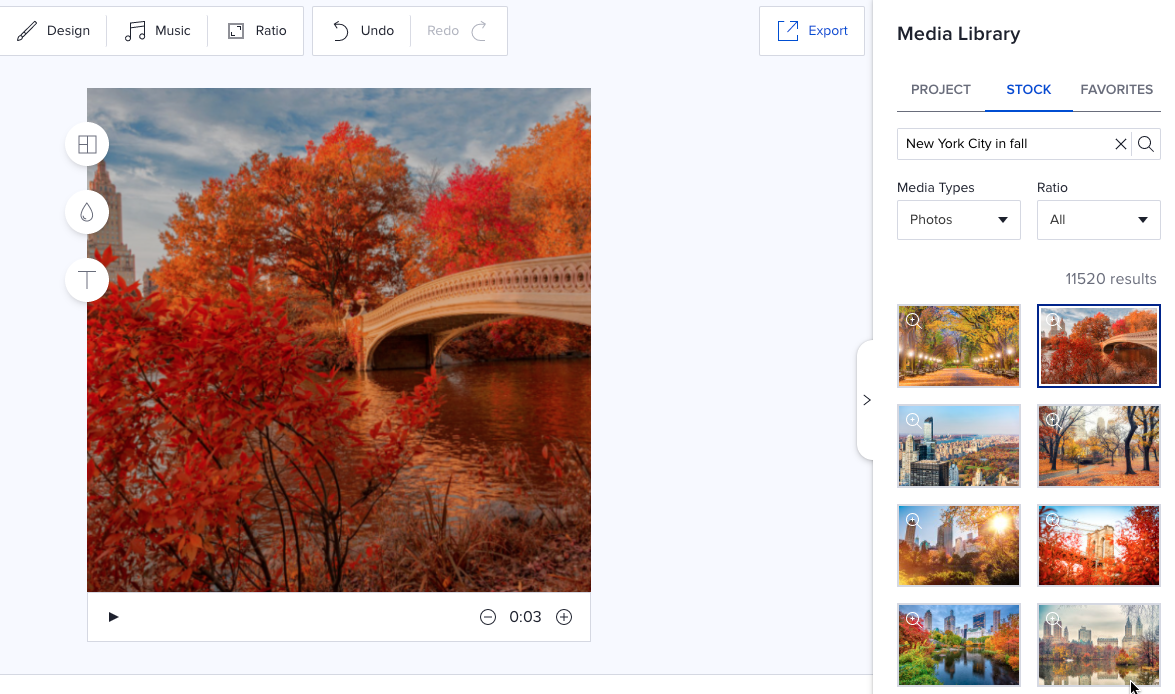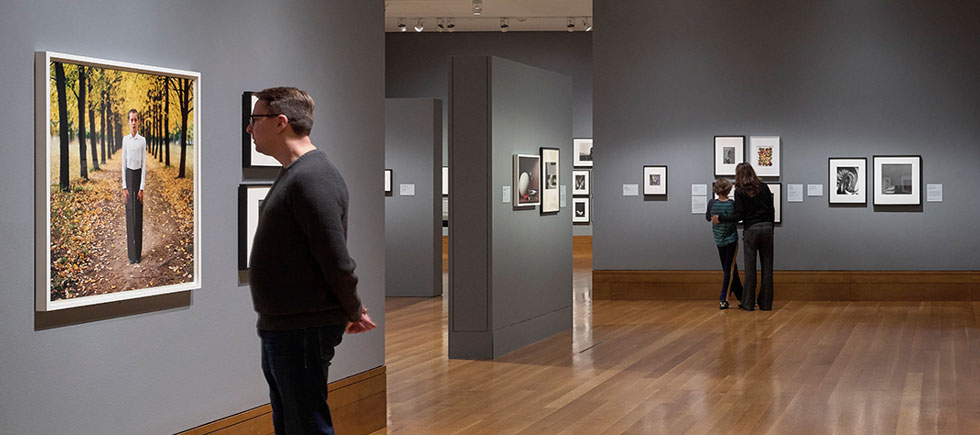Welcome to the captivating world of Getty Images, a treasure trove for anyone in need of visual content. With an extensive collection of over 200 million assets, this platform is a go-to resource for photographers, marketers, designers, and content creators alike. Whether you're looking for high-quality images, editorial photos, or stock videos, Getty Images has got you covered. In this blog post, we’ll dive into the origins and growth of this iconic company, shedding light on what makes it stand out in the vast sea of image libraries.
The Origin and Growth of Getty Images

Getty Images was founded in 1995 by Mark Getty and Jonathan Klein, stemming from a vision to revolutionize the way visual content was shared and distributed. At that time, the internet was beginning to flourish, and the potential for digital media was becoming clear. The duo recognized a gap in the market for an easily accessible platform that provided high-quality images and rights management tailored for the digital world.
Initially, Getty Images focused on building a robust library of stock photography and began acquiring well-known photo agencies. This strategic approach allowed them to secure an expansive collection of visuals, rapidly broadening their reach and impact within the industry. One of their first major acquisitions was the purchase of the renowned photo agency, PhotoDisc, in 1998. This acquisition not only expanded their image library significantly but also enhanced their technological capabilities in image management.
As the internet continued to evolve, Getty Images embraced the changing landscape by digitizing their vast collection and making it more accessible to users around the globe. The launch of their website marked a turning point, enabling photographers and artists to upload their work for sale. This democratization of content opened doors for countless creators who previously lacked visibility and opportunities.
By the early 2000s, Getty Images was solidifying its position as a leader in the visual content market. They expanded their offerings beyond traditional photography, including video and music, catering to the rising demand for multimedia content. Their acquisition of the iStockphoto platform in 2006 was a game-changer, allowing them to capitalize on the burgeoning microstock market and reach a broader audience.
Throughout the years, Getty Images has not only focused on growth through acquisitions but also emphasized partnerships and collaborations. They've collaborated with major brands and established strong relationships with leading photographers and content creators, further enriching their library. Additionally, Getty Images has been at the forefront of addressing issues around copyright and licensing, providing comprehensive guidelines that help users navigate the complex world of visual content usage.
Today, Getty Images stands at the forefront of the digital image industry, continually adapting and evolving to meet the needs of content creators and businesses alike. With a commitment to authenticity and diversity, they have made significant strides in representing a global perspective, showcasing stories through multicultural lenses. As we look towards the future, it's exciting to see how Getty Images will continue to innovate and inspire, shaping the way we view and use images in our connected world.
Also Read This: Opening Adobe Stock Images on a Mac
3. Understanding Getty Images' Vast Collection

When it comes to visual content, Getty Images stands out as a titan in the industry. Their vast collection isn't merely about quantity; it’s a carefully curated repository of high-quality images that span a plethora of themes, subjects, and styles. With over 200 million assets at your fingertips, understanding the depth and breadth of this collection can empower you to find precisely what you need—whether you're a marketer, content creator, or simply a visual storyteller.
What makes Getty Images truly unique is their commitment to quality and authenticity. Each photo is meticulously selected and often comes from professional photographers and acclaimed artists. This ensures that the imagery is not just visually appealing but also impactful and story-driven.
Moreover, Getty Images has invested heavily in advanced search technology. This means that as you delve into their library, you have access to sophisticated filters that allow you to pinpoint exactly what you’re looking for. From keywords to image orientation, and even specific colors, the search functionality is designed to save you time and enhance your creative process.
But what if you’re not sure what you're looking for? That’s where the inspiration and discovery features come into play. Getty Images offers curated galleries and trending collections that showcase the latest visual trends. This way, you can explore new styles and genres that you might not have considered before. Whether it’s engaging lifestyle photos or stunning nature shots, Getty makes it easy to discover visuals that resonate with your project.
In addition, Getty Images is continually expanding its portfolio through partnerships and collaborations, which means you’ll frequently find fresh content that captures contemporary moments and diverse perspectives. This focus on current events and cultural relevance allows creative professionals to stay ahead of the curve, ensuring that their visuals remain timely and engaging.
Also Read This: Making Money from Getty Images Images: Exploring Revenue Opportunities
4. Categories and Types of Images Available

One of the most exciting things about Getty Images is the diverse categories and types of images available. The platform isn't just a generic photo stock; it's a treasure trove of visual content that covers an extensive range of themes. Here’s a deeper look at some of the main categories you can explore:
- Editorial Images: Perfect for journalism, these images capture real-time events, celebrity appearances, and business news. These photos often tell compelling stories and include both newsworthy images and behind-the-scenes content.
- Creative Images: This category consists of conceptual and artistic photography, perfect for branding and marketing. From abstract art to whimsical portraits, these images exhibit a creative flair that can elevate your projects.
- Stock Images: Versatile and easily applicable, stock images cover a broad spectrum—from everyday life to specific business themes. These images are particularly useful for blogs, websites, and social media posts.
- Vectors and Illustrations: If you’re looking for something that goes beyond photography, Getty also provides a range of vector images and illustrations. These can be incredibly useful for graphic design projects and marketing materials.
- Footage and Video: And let’s not forget about video content! Getty Images offers high-quality footage that can enhance your storytelling, be it for corporate videos, commercials, or social media campaigns.
Each category is filled with subcategories, allowing for even more precise searches. For example, under lifestyle images, you might find subcategories like travel, food, and wellness. This layer of depth makes it incredibly easy to find images that align perfectly with your messaging and branding.
Ultimately, whether you need visuals for an article, ad campaign, or personal project, Getty Images offers a vast landscape of possibilities designed to cater to diverse creative needs.
Also Read This: How to Download Getty Images from Squarespace
5. How to Access Getty Images

If you're ready to dive into the vast collection of Getty Images, the good news is that accessing their library is pretty straightforward! Whether you're a creative professional, a marketer, or someone in need of high-quality visuals, here’s how you can explore and utilize Getty Images' resources.
First, you’ll want to visit the Getty Images website. Upon landing on the homepage, you’ll find a search bar prominently displayed at the top. Simply type in keywords related to the types of images you’re looking for—be it landscapes, people, events, or something more niche. The search functionality is quite robust and allows for filtering results based on various criteria, such as orientation, color, and even the mood of the image.
Once you’re browsing through images, take advantage of the filtering options available. You can narrow down your search based on image type (e.g., photos, illustrations, videos), category (like news, sports, entertainment), and even the license type you need. This way, you can quickly find exactly what suits your project requirements.
If you want to try before you buy, Getty Images offers a preview feature. By clicking on any image, you can explore its details, including resolution and licensing options. It's a handy way to see how the visuals fit into your project before committing to a purchase.
For regular users, consider creating a personal account. By signing up, you'll gain access to additional features, such as saving your favorite images into collections and managing your downloads more efficiently. Accounts may also provide insights into your search history, making it easier to return to images you liked.
Don’t forget to check out Getty’s various plans. Whether you're purchasing an individual image or looking for a subscription model for ongoing needs, there are options tailored to fit different budgets and usage intentions. Just make sure to read and understand the terms surrounding each option to choose what best fits your needs. Ready to explore? Happy searching!
Also Read This: How Much Can You Earn from Adobe Stock
6. Pricing and Licensing Options
Understanding the pricing and licensing options available at Getty Images is crucial for anyone looking to use their expansive photo library effectively. Getty Images has a variety of plans, which allow users to choose the best fit based on their specific requirements. Let’s break it down!
Firstly, Getty Images offers different types of licenses for their images:
- Royalty-Free: This license allows you to use the image multiple times, in various projects, without paying additional royalties. It's a great choice for those who intend to use the image widely.
- Rights-Managed: This pricing model is typically used for specific, single-use instances where the price is determined by factors like the duration of usage, geographical area, and type of media. It’s more restrictive but offers exclusive licensing options.
Now, let’s talk about pricing. Getty Images has flexible pricing structures:
- On-demand licensing: You can purchase images individually. Prices vary based on resolution and intended use. High-resolution images ideal for print will typically cost more than web-optimized images.
- Subscription plans: If you’re looking to access a large number of images over a period, consider subscription plans. These allow users to download a set number of images each month for a flat fee. It’s perfect for freelancers and businesses that require frequent access to various images.
- Enterprise options: Larger organizations can explore bespoke packages tailored to their extensive needs. These can include advanced workflows and customized support.
Lastly, always check for any special conditions or restrictions tied to the image use. For example, some images may have specific attribution requirements or limitations on resale. Understanding these details is crucial to ensure compliance and avoid unexpected issues down the line.
In summary, when it comes to Getty Images, knowing how to access the library and navigate their pricing and licensing options is your first step in leveraging their stunning visuals for your projects. Whether it's a one-time purchase or a subscription plan, find what fits your needs and get creative!
Also Read This: Does Getty Own iStock? A Closer Look at Ownership Structure
7. Comparison with Other Stock Photo Libraries
When it comes to the realm of stock photography, Getty Images is often the name that first comes to mind. However, it's essential to consider how it stacks up against other popular stock photo libraries. Understanding these differences can help users choose the right resource for their visual storytelling needs. Let's break down some key players in the stock photo market.
1. Adobe Stock
Adobe Stock has gained a lot of traction in recent years. With a vast library that integrates seamlessly with Adobe Creative Cloud products, it's a natural choice for many designers and creatives. The quality of images tends to be top-notch, but it often lacks the extensive historical images and editorial content that Getty is known for.
2. Shutterstock
Shutterstock is another well-known stock photo library, offering millions of images at more affordable prices than Getty. However, users sometimes find that the quality can be inconsistent. While it does provide a wide array of modern and diverse imagery, it doesn't quite match the depth of Getty's library, particularly when it comes to iconic historical images.
3. iStock
Owned by Getty Images, iStock serves as a budget-friendly solution for those who want a touch of Getty's quality without the price tag. While it offers a good selection of creative images and allows for easy browsing, it may not have the same variety of professional-grade editorial content.
4. Alamy
Alamy prides itself on its exceptionally diverse and authentic collection. Unlike Getty, it doesn’t follow a subscription model, which allows for one-off purchases. However, navigating Alamy’s vast library can sometimes be challenging, making it less user-friendly for quick searches.
In comparing these libraries, it's clear that while Getty Images may carry a higher price point, the extensive range and quality of images available justify the cost for many professionals. The value of Getty lies not just in its vast collection but also in:
- The comprehensive range of editorial content.
- High-resolution photos that cater to commercial needs.
- Exclusive access to notable photographers and artists’ works.
As you assess your needs for stock photography, consider what you prioritize: is it quality, diversity, ease of access, or cost? Each platform has its strengths and will appeal differently depending on your project requirements.
8. Conclusion: The Importance of Getty Images in Visual Storytelling
In the digital age, where visuals play a crucial role in communication and branding, Getty Images stands out as a pivotal resource for creators and storytellers. Its extensive photo library not only serves as a repository of high-quality images but also embodies the art of visual storytelling itself.
Why does this matter? Well, as we’ve discussed, the right image can:
- Enhance emotional resonance and engagement.
- Convey complex ideas quickly and effectively.
- Establish brand identity and personality.
Getty Images provides not just images but also the stories behind them. Their collection includes photographs that capture defining moments in history and identity, tying visuals to cultural narratives. This makes Getty not just a database, but a treasure trove of human experiences.
Moreover, as various industries evolve, the demand for authentic and diverse representation in media continues to grow. Getty has risen to this challenge, actively seeking out and showcasing underrepresented voices in photography.
In conclusion, whether you're a marketer looking to boost your campaign’s impact, a journalist aiming to deliver powerful visual narratives, or a brand seeking to communicate its values, Getty Images is an indispensable tool. Its blend of quality, quantity, and context allows users to craft compelling stories through visuals that resonate across audiences and mediums.
Getting the right image from Getty Images can transform a good project into a great one, underscoring the essence of the narrative you wish to share. So next time you're on the hunt for stock photography, consider what Getty offers, and harness the power of visual storytelling at your fingertips.
 admin
admin








